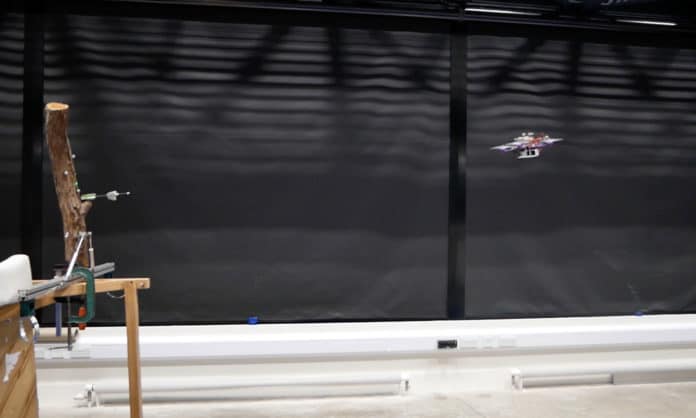Researchers at Imperial College London’s Aerial Robotics Lab have developed a dart-shooting drone ideal for setting up wireless sensor networks (WSNs) in hazardous environments. Deploying these small data-logging sensors can be difficult and even dangerous work. The drone could deploy a whole bunch of self-contained sensor nodes that create a network that can monitor a very large area for a very long time.
It consists of a compressed mainspring, which stores energy for starting, and a shape memory alloy spring, which, when current is applied, moves the hook holding the mainspring back. The developed aerial system weighs a total of 650 grams and can execute up to 17 deployments on a single battery charge. The drone system deploys sensors of 30 grams up to 4 meters from a target with an accuracy of 10 cm. They are not as accurate as manipulator-driven drones; however, these drones can maintain a safe distance from their target.
The aerial deployment method is validated through more than 80 successful deployments in indoor and outdoor environments. However, sometimes within a meter of the target, the darts bounce rather than hit the target. At a distance of 1 to 4 meters, the dart hit the target 90-100% of the time. Outdoor tests were also successful, although the system was manually operated. The researchers note that in the future, “regular and safe operations will be performed autonomously.”
Also, researchers point out that there are many potential attachment mechanisms – including magnets, adhesives, or chemical compounds.
The proposed approach can be integrated into field operations and complement other robotic or manual sensor placement procedures. This would bring benefits for demanding industrial applications, scientific fieldwork, smart cities, and hazardous environments.
